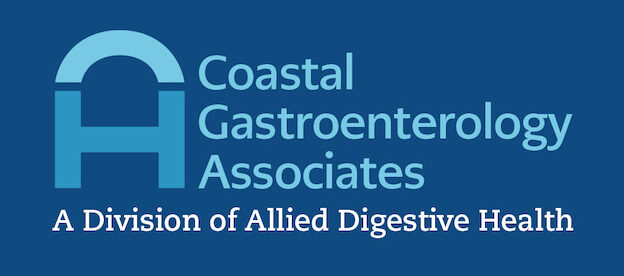Why Celiac Disease Often Leads to Iron Deficiency Anemia

- January 11, 2024
Celiac Disease and Iron Deficiency Anemia
Celiac disease is an autoimmune disorder caused by a reaction to gluten, a protein found in wheat, barley, and rye. This reaction causes damage to the small intestine, leading to malabsorption of nutrients and other complications. One of these complications is iron deficiency anemia (IDA).
Iron deficiency anemia occurs when there is a lack of iron in the body, which can decrease the production of red blood cells. This can lead to fatigue, weakness, shortness of breath, and pale skin. Celiac disease is one of the leading causes of IDA.
Anemia Symptoms and Causes
Anemia, specifically iron deficiency anemia, arises when the body lacks enough iron to produce adequate red blood cells necessary for carrying oxygen throughout the body. People with anemia may experience various symptoms due to insufficient oxygen supply to the body’s tissues. These can include:
- Fatigue and weakness
- Pale or yellowish skin
- Irregular heartbeats
- Shortness of breath
- Dizziness or lightheadedness
- Chest pain
- Cold hands and feet
- Headaches
The underlying cause of anemia in celiac patients is usually malabsorption. In celiac disease, the immune reaction to gluten damages the small intestinal lining, impairing iron absorption and other essential nutrients.
Other Causes of Anemia
While celiac disease can indeed lead to anemia, it’s important to note that there are various other potential causes of this condition.
- Dietary deficiency: A lack of iron, vitamin B12, and folic acid can lead to anemia. These nutrients are vital for the production of red blood cells.
- Chronic diseases: Certain chronic diseases, such as cancer, HIV/AIDS, rheumatoid arthritis, and kidney disease, can interfere with the production of red blood cells, resulting in anemia.
- Pregnancy: Iron deficiency anemia can occur in pregnant women due to the increased blood volume during pregnancy.
- Menstruation: Women with heavy periods can develop iron deficiency anemia due to significant blood loss.
- Bone marrow disorders: Certain diseases and conditions that affect the bone marrow – such as leukemia or myelofibrosis – can cause anemia by affecting blood production.
- Infections and autoimmune disorders: Certain infections, diseases, and medications can affect red blood cell production and lead to anemia. This includes conditions like lupus or medications such as chemotherapy drugs.
Iron-Deficiency Anemia and Celiac Disease
Celiac disease not only triggers an immune response damaging the small intestine, but it also leads to iron-deficiency anemia due to inadequate absorption of iron. Iron is vital for producing hemoglobin, the protein in red blood cells responsible for carrying oxygen to tissues and organs. When individuals with celiac disease consume gluten, the resulting intestinal damage prevents the adequate absorption of iron, leading to a deficit.
Consequently, the body cannot produce enough functional red blood cells, leading to anemia. Symptoms of iron-deficiency anemia in the context of celiac disease, such as fatigue, weakness, and dizziness, might be some of the first noticeable signs of this underlying autoimmune condition.
Malnutrition is to Blame for Iron Deficiency
A direct relationship exists between malnutrition and the development of iron deficiency anemia in patients with celiac disease. Malnutrition, in this context, refers not to a lack of food but rather to an inadequate absorption of nutrients due to damage to the small intestine. Despite having an iron-rich diet, individuals with celiac disease often struggle with iron deficiency.
The reasons are twofold: not only does the immune reaction to gluten cause malabsorption, but inflammation in the gut also inhibits the body’s ability to utilize iron efficiently. This malabsorption and subsequent malnutrition contribute significantly to the development of iron-deficiency anemia seen in many patients with celiac disease. Consequently, it is important to recognize and address both the gluten-triggered autoimmunity and the resultant malnutrition to effectively manage and treat iron-deficiency anemia in individuals with celiac disease.
The Gluten-Free Diet
A gluten-free diet is a diet that excludes the protein gluten. Gluten is found in grains such as wheat, barley, rye, and a cross between wheat and rye called triticale. A gluten-free diet is essential for managing symptoms and complications associated with certain medical conditions such as celiac disease.
In a gluten-free diet, one must avoid all foods containing gluten. This includes many food items such as bread, pasta, cereal, and baked goods, commonly containing gluten. Some processed foods, sauces, and beverages may also include gluten, often as a flavor enhancer or thickening agent.
However, a gluten-free diet doesn’t have to be restrictive. Many healthy and delicious foods are naturally gluten-free. These include fruits, vegetables, meats, seafood, dairy, beans, legumes, and a variety of whole grains like quinoa, rice, and millet.
Moreover, with the increased awareness and diagnosis of celiac disease, there has been a surge in the availability of gluten-free versions of popular foods. These include bread, pasta, and cereals, now readily available in most supermarkets.
It’s imperative, however, to carefully read the labels when shopping for gluten-free products, as some products might be labeled “wheat-free” but could still contain other forms of gluten. Living with a gluten-free diet requires careful reading of food labels unless the food is fresh and naturally gluten-free. Consulting with a nutritionist or dietitian can also be beneficial in managing and maintaining a balanced, nutrient-rich, gluten-free diet.
When to Talk to Your Doctor
If you are experiencing persistent symptoms of iron-deficiency anemia, such as chronic fatigue, weakness, dizziness, or shortness of breath, it’s crucial to consult your healthcare provider. These symptoms could indicate an underlying condition, such as celiac disease, that requires medical attention. Additionally, suppose you’ve been diagnosed with celiac disease and are following a gluten-free diet but still experiencing symptoms of anemia. In that case, this is also an excellent reason to seek medical advice.
Sometimes, despite adhering to a strict gluten-free regimen, the damage to the small intestine might take time to heal, and additional treatment might be necessary to support iron absorption and address iron-deficiency anemia. Always remember that early detection and management of any health issue not only leads to more effective treatment but also prevents potential complications down the line.
Footer
© All Rights Reserved


